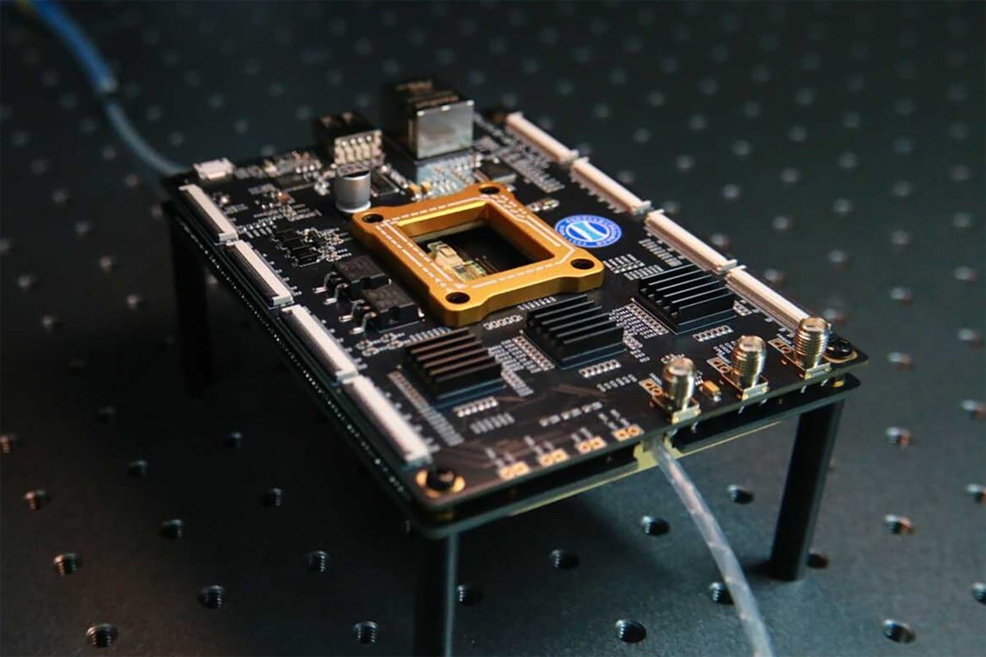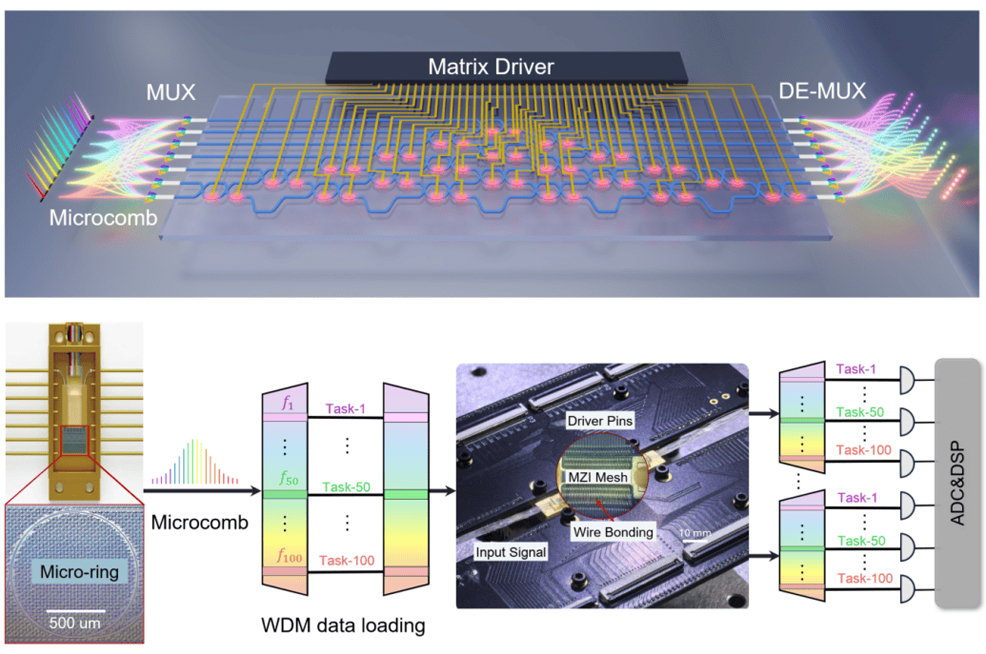
26th June 2025 Optical chip achieves 100-way parallel processing A potentially revolutionary new processor uses light instead of electricity to do 100 calculations simultaneously, pointing the way to a future beyond the limits of Moore's Law.
Chinese scientists have achieved a milestone in computing by developing a chip that processes information using light – not electricity – while handling 100 tasks all at the same time. This breakthrough in "parallel optical computing" could reshape the future of hardware, opening up new possibilities for artificial intelligence, data processing, and beyond. At the core of the system is something called a soliton microcomb – a device that splits a single laser beam into over 100 evenly spaced colours, or wavelengths. Each of these acts like a separate channel for carrying data. Think of it like tuning into 100 different radio stations on a single dial, but instead of music, each can perform its own independent mathematical calculation. These channels then travel through an advanced network of light-based circuits known as Mach–Zehnder interferometers (MZIs), which manipulate the light in a controlled way to perform fast and efficient calculations – specifically, the kind used in AI and neural networks.
This approach is fundamentally different from how today's computer chips operate. Traditional processors use electrons flowing through transistors on silicon to carry out operations. While this method has served us well for decades, it's running into serious physical limits. Shrinking components further leads to overheating, signal interference, and enormous energy consumption. Moore's Law – the long-standing observation that computing power doubles every two years – is finally starting to falter. What makes this new optical chip remarkable is its ability to scale up performance without needing more space or energy. Instead of trying to cram ever more transistors onto a chip, the researchers have exploited an entirely different dimension: light's frequency spectrum. Using different colours of light simultaneously, they achieved an unprecedented level of parallelism – 100-fold in this case – all within a compact footprint. Crucially, the chip maintained high accuracy across these channels, showing over 90% consistency in output. It demonstrated up to 2,500 mathematical operations per cycle on just a 5×5 grid of light processors: incredible parallelism from such a small physical area. In their paper, which appears this month in the journal eLight, the researchers write: "Our work unleashes the intrinsic degrees of freedom of photons for computing and demonstrates an avenue to scale up computility by orders of magnitude through high parallelism without increasing chip area, which is important for AI, quantum information science, and others." The chip, named Meteor-1, has been developed by the Shanghai Institute of Optics and Fine Mechanics (SIOM) under the Chinese Academy of Sciences. It can deliver a theoretical peak performance of 2,560 tera-operations per second (TOPS) at a 50 GHz optical clock rate. That puts it roughly twice as fast as Nvidia's RTX 4090 (1,321 TOPS) and within striking distance of the latest RTX 5090, which peaks at 3,352 TOPS. Earlier efforts at optical computing have often stumbled when trying to handle large-scale tasks. They either lacked precision, couldn't scale up, or suffered from "crosstalk" between signals. But this new architecture solves many of those issues with clever design choices, including adaptive error correction to compensate for slight distortions in the light paths. It's also compatible with existing telecom components, potentially easing integration into future systems. China's prototype of Meteor-1 reflects the country's rapidly growing capabilities in advanced chip design, hinting at a future where it could help shape the next major computing paradigm. Looking ahead, this breakthrough offers a promising route to keep pace with the ever-growing demands in AI, while using less power and generating less heat. As optical chips evolve, we may see processors capable of thousands – or even millions – of simultaneous operations, giving brain-like efficiency to machines. With silicon nearing its limits, light may just be the way forward.
Comments »
If you enjoyed this article, please consider sharing it:
|
||||||








